Refugia Newsletter #63
SEC rules, John Kerry's leadership, urban greening, biomimicry, Pakistani refugia, and environmental art
Refugia News
Blessings be upon the person who decided to plant hellebores, or Lenten roses, outside the door where I enter my office building at Calvin University. These gorgeous early risers are blooming profusely right now, even while the daffodils and tulips are just waking up. I know, I know: hellebores are not native to North America, but they’re well-behaved and not invasive. So every day, I drink in their beauty.
I don’t know what variety these are. Any ideas? I also noticed some early riser bees enjoying them.
I was completely thrilled last week when Father Richard Rohr’s wonderful Daily Meditations email (produced by the Center for Action and Contemplation) featured quotations from … Refugia Faith! Wow! Not only that, but quotes from the book sat alongside quotes from Robin Wall Kimmerer! I texted my adult children and announced “your mother has officially arrived!” Seriously, I was very honored.
This photo by Benjamin Yazza, Untitled Porcupine (detail), New Mexico, 2023, was featured in Rohr’s newsletter. Admittedly, the quotations they used from my book were a bit prickly, so the porcupine is fitting!
Finally, shout-out to Refugia Newsletter reader Cindy, who referred three friends to this newsletter and thus has earned a mention here. Thank you, Cindy! And welcome to all new subscribers. I think some of you found this newsletter thanks to the Richard Rohr mention of the book. Welcome.
This Week in Climate News
Two wonky news stories to tackle today. First, the recent SEC rules change. Then, some thoughts from an important climate wonk, John Kerry. (For me, “wonk” is a good word. Obviously.)
The US Securities and Exchange Commission approved new rules on March 6 that require public companies to disclose their carbon emissions and their (relevant) climate risks. This is an important step toward corporate accountability, it’s true. But of course, the stricter rules initially proposed had been watered down thanks to furious lobbying. (For a deep dive on all those machinations, check out this piece in Heated.) So no one is happy. Environmentalists wanted more disclosure. The corporate lobbyists (and their Republican handmaidens) complain that this is government overreach and places an “onerous burden” on businesses.
On March 5, David Gelles forecast for the New York Times what the ruling was expected to be:
For the first time, all U.S.-listed companies will probably be required to disclose significant risks posed by climate change as well as their own climate footprints, which are known as Scope 1 and 2 emissions. But notably, the final S.E.C. rules are not expected to require companies to disclose their Scope 3 emissions, which are produced by suppliers or consumers of a company’s product.
Sure enough, that’s what happened. Scope 1 and 2, but not 3. In fact, even the scope 1 and 2 parts were weakened to include only what a business feels is “material” to their bottom line. (Hunh?) The thing is, as Gelles wrote, investors do actually want information, because it pertains to corporate value and corporate profits and the stability of the economy in general:
Against this backdrop, investors have been clamoring for more information that might help them make sound decisions, and regulators are trying to respond.
Think of hotel chains that own extensive waterfront property, agricultural conglomerates that are susceptible to drought and shipping companies that get pinched by weather-related disruptions. Investors in these companies might benefit from forcing companies to disclose the risks they face and how they’re trying to prepare.
On the day the new rules were handed down, Gelles and two other NYT writers published another article, noting that the new rules are an attempt not only to make reporting more universal but more reliable:
Many companies are already disclosing climate-related information, and investors are already making choices with that data in mind. However, the S.E.C. commissioner, Caroline A. Crenshaw, called the current approach “a haphazard potpourri.”
The S.E.C. has said the new rules were meant to meet investors’ demands for better, more comparable data on emissions and risks than what companies voluntarily include in their sustainability reports, which are often difficult to verify. “Today’s rules enhance the consistency, comparability, and reliability of disclosures,” S.E.C. Chair Gary Gensler said.
Lawsuits will now commence, as you might guess, from both sides of the game.
Corporate accountability is crucially important, and it will always be a struggle. But there are other forms of accountability besides government rules: excellent journalistic reporting, actual satellite data on emissions, public opinion, investor behavior—these are also tools. And there are other pressures, within the market itself, that will continue to put pressure on companies to move toward carbon emissions reductions and a sustainable business model.
For instance, tracking emissions is one thing, but what about “nature risk”? That’s a question Manuela Andreoni asks. Like, what are y’all damaging in order to make your product, site your buildings, deal with your waste, transport your stuff, and what does that cost the rest of us? The problem is: how do you quantify risks to nature?
Well, who is good at quantifying risk? That’s right: insurance companies. This piece by Amy Green of Inside Climate News covers what happens when insurance companies figure out that Florida is prone to hurricanes (five big ones in the past seven years) and therefore a lot of Florida property is not profitable to insure. Apparently, we are dealing with what they call in the biz “unpriced risk.” In other words, a lot of actual climate risks are not accounted for in the insurance system or property value system—but that’s changing. And insurance companies are raising rates or withdrawing from riskier markets or both.
Meanwhile, the Insure Our Future campaign has been organizing protests all over the world, urging insurance giants to stop insuring fossil fuel projects. Keerti Gopal reports for Inside Climate News that the argument is basically that fossil fuels create climate change which creates financial risk:
Insurance companies are meant to evaluate risks and act accordingly. Recognizing that new fossil fuel infrastructure projects require insurance, the climate movement is seeking to convince the insurance industry that fossil fuel projects are not good investments due to the serious financial risks posed by climate change as extreme weather events become increasingly volatile, deadly and costly.
No one supposes that insurance giants are knights in shining armor, but they can’t make money if they can’t predict outcomes accurately. And climate change creates prediction chaos.
Well, SEC rules and insurance calculations are indeed wonky topics. Thank goodness for people who are willing to get into the weeds. As you may have read, one important weed-whacker, John Kerry, has recently stepped down as US climate envoy. He will continue his climate advocacy work now as a private citizen—this gives him different kinds of freedoms to speak and operate.
Sidenote: who will be the first to get Al Gore and John Kerry to do a televised conversation? Wouldn’t that be interesting?
Anyway, I’ve been reading some of the “exit interviews” with Kerry. He’s been in the game for a long time, and has been instrumental to say the least in moving the US and the world toward climate mitigation and adaptation. He represented the US in the Paris Agreement agreement, for instance, and was part of the more recent COP negotiations, too.
I would summarize the interviews like this: Kerry believes we have come a long way, a lot of good things are happening globally, we just need to move faster. There. But it’s fun to see exactly what words he’ll use now that he can be as frank as he likes.
Kerry at COP 27. Image credit: npr.org/Joseph Eid/AFP via Getty Images
Kiley Price of Inside Climate News has already summarized several of the interviews in this piece. She quotes Kerry not mincing words: “oil and gas are still on a binge and their profits are obscene.” And then she quotes this bit from Kerry’s interview with NPR:
I mean, point blank: we are heading towards about 2.5 degrees right now. But we know – given what we achieved in Glasgow and Sharm el-Sheikh, and now most recently the UAE consensus – if we implemented all the initiatives and all of the targets that were set by those various meetings, we could actually hold the earth’s temperature to about 1.7 degrees. When I took this job on, we were headed towards four degrees. And now we’re heading towards 2.5.
So: we’ve come a long way. Must do more!
Bill McKibben also interviewed Kerry for The New Yorker. To explain his departure, Kerry told McKibben that “we’re at a really critical moment” and explained his departure:
I am stepping down to put focus on implementing what we accomplished in Dubai, which will require J.B. getting re-elected but also the deployment of massive clean energy and vast sums of investment to win this fight. I intend to work globally to push the private sector.
When asked why some countries, particularly in Asia, are still building fossil fuel infrastructure, Kerry explained:
I think it can be attributed to a number of things. One, business as usual is easier for some of these guys. No. 2, just plain old greed. And, No. 3, the profit [in clean energy] doesn’t compare.
How do we make the transition, the hard changes necessary? Can we? Kerry is determined:
We need young folks raising hell, as they are. I mean, Greta Thunberg and people who have been out there, and I think it’s had an impact. Some people are saying, Oh, God, I know it’s not going to make a difference, that the other guys are too big. They’re not. You can beat the money. You can beat it with people knocking on doors, getting people to do things. That still works. And we need more of it.
And, on the other side, you’ll have less people with cancer, less people dying of bad air quality, less threat that you have to send young people to another part of the world to defend the way you provide your energy. Life will be better, safer, cleaner, more secure, no question about it.
John Podesta will more or less take over Kerry’s work in the Biden White House in the role of “senior adviser for international climate policy.” This is a position that does not require congressional approval, so Biden was able to name Podesta without fuss.
Deeper Dive
When I lived in the Los Angeles area in the early 2000s—we lived in Sun Valley—we had some very heavy rains in January, and I remember how the streets basically became rivers. There was nowhere for the water to go, because everything was paved, so the water just stayed on the surface. And the meager little storm drains could not handle the load. Since then, Los Angeles has been working to make the city “spongier.” This was extremely helpful during last month’s huge flooding event:
By installing a mosaic of green spaces and shallow basins with porous soil known as “spreading grounds,” the city was able to soak up 8.6 billion gallons of water during the storm, which is enough to support over 100,000 households for a year, Wired reported last week.
This piece by Kiley Price in Inside Climate News (go Kiley! quoting you twice in this issue…) goes on to observe how “spongey” natural areas in cities help manage water:
Natural materials such as dirt and plants, on the other hand, welcome the water from storms or dams, and can filter it into underground aquifers that cities can tap into for freshwater supplies, especially during droughts. An added bonus? Green spaces have a slew of health benefits for city dwellers—from reducing heat stress to boosting mental health.
Many cities around the world, as Price and her colleague Elena Shao report, are working with spongey infrastructure to better adapt to big storm events. This kind of water management is one example of a larger field of design called “biomimicry.” The basic idea is to observe how things work in nature and find a way to imitate that to achieve the purpose you’re seeking. You can learn all about it at the Biomimicry Institute website.
A purposeful spongey area in Quian’an, China. Image credit npr.org, Mu Yu/Xinhua via Getty Images
Here’s another example of biomimicry: green roads. Ben Goldfarb for Yale Environment 360 explains:
As the developing world witnesses a boom in road building, a movement to retrofit existing roads is gathering steam. Using embankments, channels, and dikes, so-called “green roads” help control floods, harvest excess water for use in irrigation, and slash maintenance costs.
It’s pretty cool: just build the road up higher, plant trees alongside to provide shade and hold the soil, and manage the drainage strategically.
Image credit: e360.Yale.edu, Andrew Zakharenka
You may also know about “green roofs” and “living walls.” These strategies are so well-established now that—as I found out—if you search online for these terms, you get a whole bunch of websites for businesses who would be happy to install one for you. Green roofs provide cooling and insulation, reducing the “heat island” effect and helping with energy cost savings. They also provide urban habitat for critters and beauty for people.
Church of Jesus Christ Latter Day Saints intensive green roof, Salt Lake City, UT. Image credit: epa.gov
“Living walls” provide similar benefits, besides being visually amazing. For more living walls, check out this website.
Wowza! Kö-Bogen II office block in Düsseldorf, Germany. Image credit: ubm-development.com
If you’re not up for roofs or walls, how about some beautiful urban greenways? New York City already has 20 miles of urban pathways, including the famous High Line, a walking/biking path lined with native plants and trees. And they’re planning 40 more miles of these shady, water-absorbing, mood-boosting pathways. The “urban greening” movement is well underway and benefits everyone.
I walked the High Line last fall myself!
While we’re talking about biomimicry, let us once again give honor to the chonky beaver, the genius of ecosystem engineering. The Bureau of Land Management is now using Inflation Reduction Act money to create pretend beaver dams for water management and wetland restoration out West. The hope is the the actual furry folk will eventually move in and take over maintenance. This site has an explanation and a lovely video, explaining the project.
Refugia Sighting
I just started listening to the Hope is a Verb podcast, hosted by Angus Hervey and Amy Davoren-Rose. These are some of the good people working on the “Fix the News” project, which seeks to counteract all the click-bait and “if it bleeds it leads” news out there by sharing amazing things that amazing people are doing, on climate and everything else.
I listened to the episode featuring Yasmeen Lari, and I highly recommend it. Lari is a “starchitect” from Pakistan who gave up her lucrative business to help the millions of people displaced and unhoused thanks to the extreme flooding in her country. She is developing methods to empower poor people to build their own homes, raise their own food, and create their own micro-economies. Zero carbon, zero dollars, zero charity. She has an inspiring vision of empowering people for resilience, using the meager resources right around them. It’s about training, not handouts. And it’s working. Lari praises the intelligence and determination of people, and she has valid critiques of the international charity model.
Yasmeen Lari. Image credit: guardian.com, Courtesy Heritage Foundation of Pakistan
One of the features of refugia is that they often are “low resource” spaces. Lari is helping people create their own refugia, even amid post-flood devastation and poverty. It’s a beautifully handled interview with a remarkable person.
The Not-So-Wayback Machine
I’m grateful for the good people over at Circlewood in Camano Island, Washington, and for their excellent Ecological Disciple newsletter. They often feature “environmental artists,” and I want to share with you this wonderful piece on the German artist Nils-Udo, who creates art in the wild. Here’s how he describes his method:
Sketching with flowers. Painting with clouds. Writing with water. Tracing the May wind, the path of a falling leaf. Working for a thunderstorm. Awaiting a glacier. Directing water and light.
His art is ephemeral: he creates it from whatever is available on site, and then nature takes over. The photos are the only record of the “original” work, and then nature continues to “collaborate” with what Nils-Udo arranged. Check out the piece for more photos of his work.
CLEMSON CLAY-NEST, SOUTH CAROLINA, 2015, NILS-UDO, MADE OF PINE TRUNKS, CLAY, BAMBOO
That’s all for this week. Until next time, be well.
As always, bold type in quotations is added unless otherwise indicated.







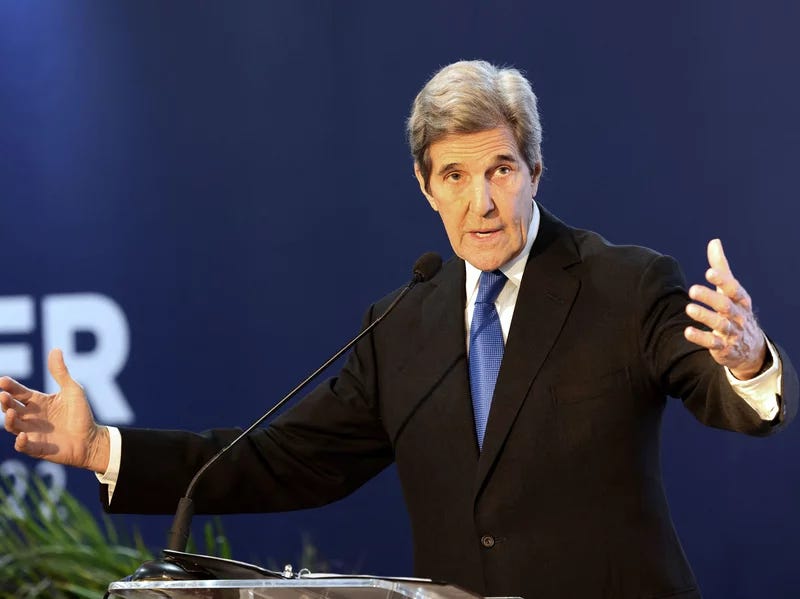
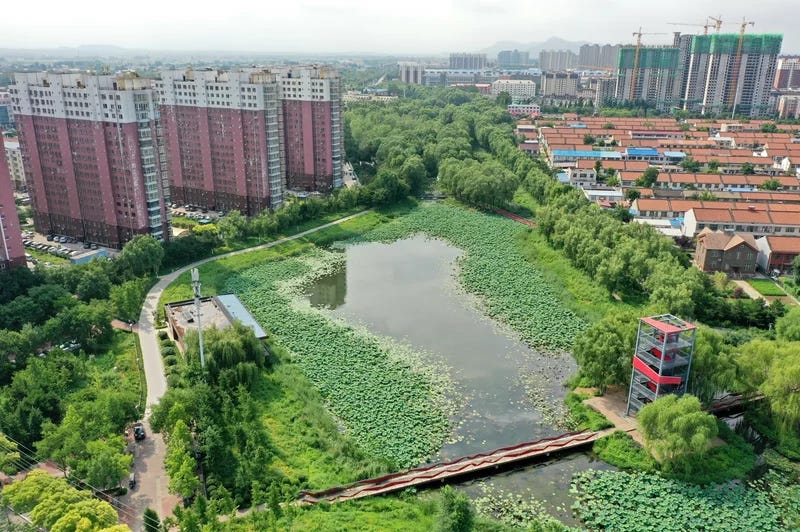
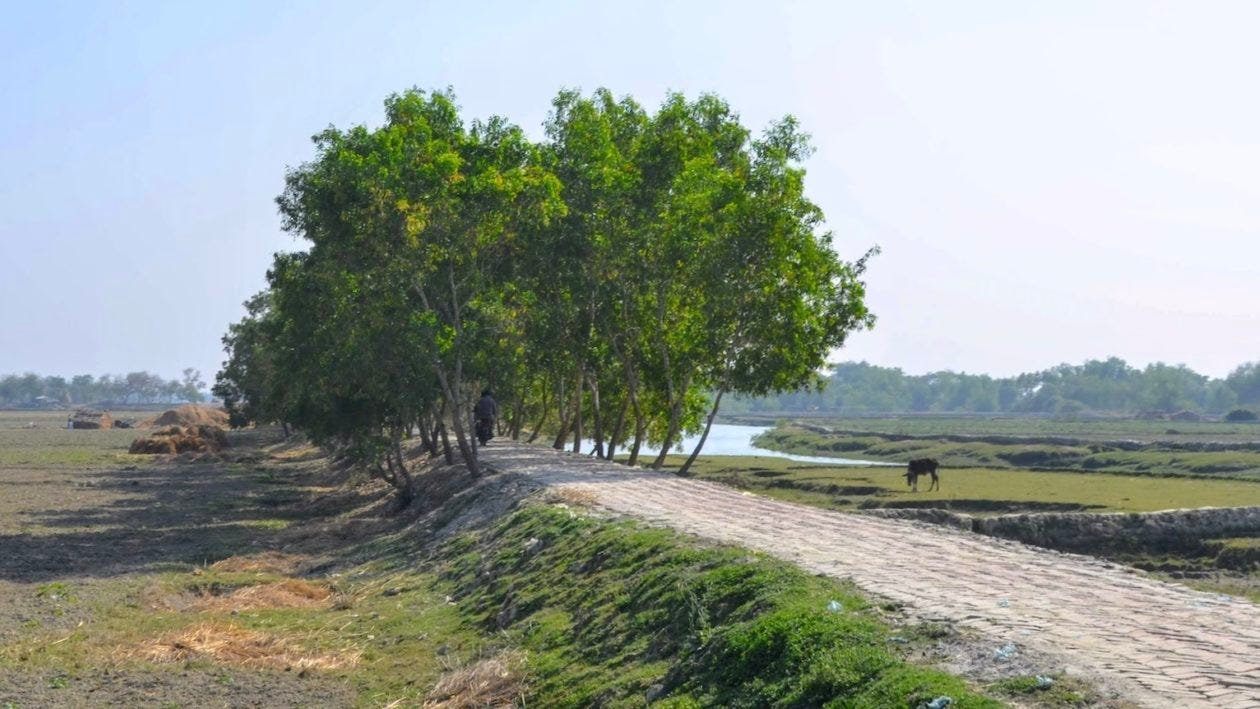
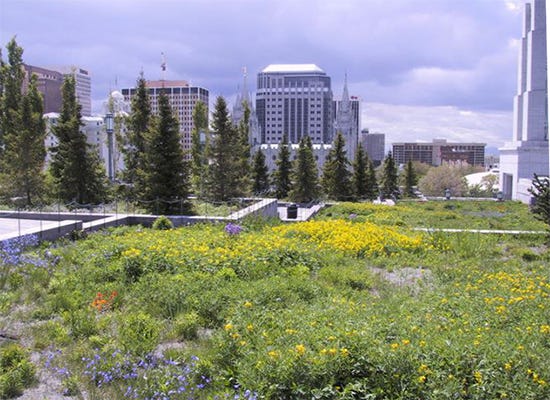
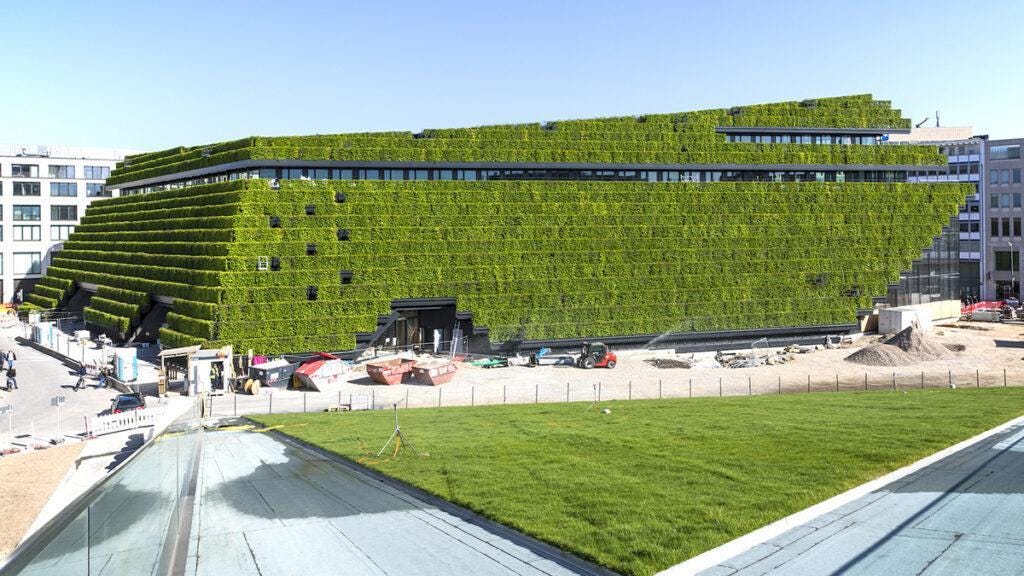




Debra, I wept as I watched the video, "Nature's Engineers." Oh, that we could humble ourselves more and more to observe and integrate the wisdom-filled ways of the natural world. And the integration of wisdom of Indigenous peoples was utterly beautiful. Love your newsletter - it fosters hope.